1. Holy Monday Procession
Every Holy Monday, thousands of faithful accompany the solemn procession of the Lord of the Earthquakes through the streets of Cusco, expressing their faith and hope in this ancient tradition.
- This is the main event in honor of the Lord of the Earthquakes.
- It takes place every Holy Monday, one week before Easter Sunday.
- The image is carried from the Cusco Cathedral and paraded through the main streets of the Historic Center.
- Thousands of people, both locals and visitors, participate with devotion.
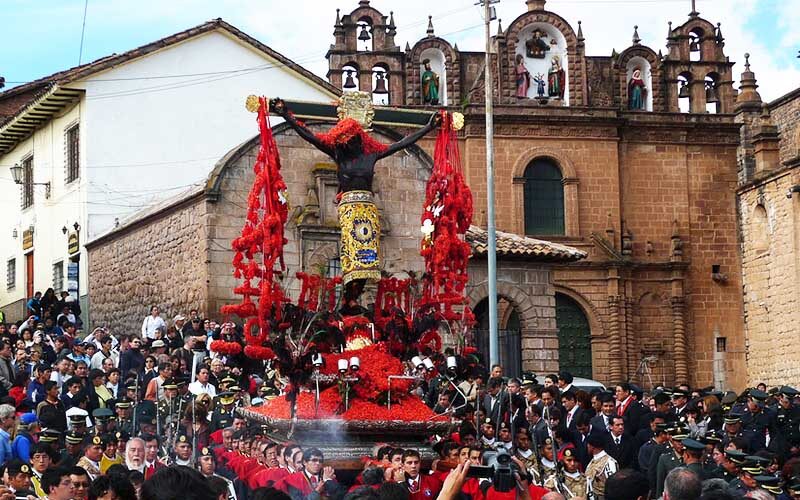
2. Ñucchu Flower Offerings
During the procession, devotees throw ñucchu flowers at the dark-skinned Christ, a symbolic gesture of sacrifice, protection, and the blending of Andean beliefs with Christianity.
- Devotees throw a traditional red flower called ñucchu at the Lord of the Earthquakes during the procession.
- This flower represents blood, sacrifice, and protection.
- It is an ancient Andean custom adapted to Christian worship.
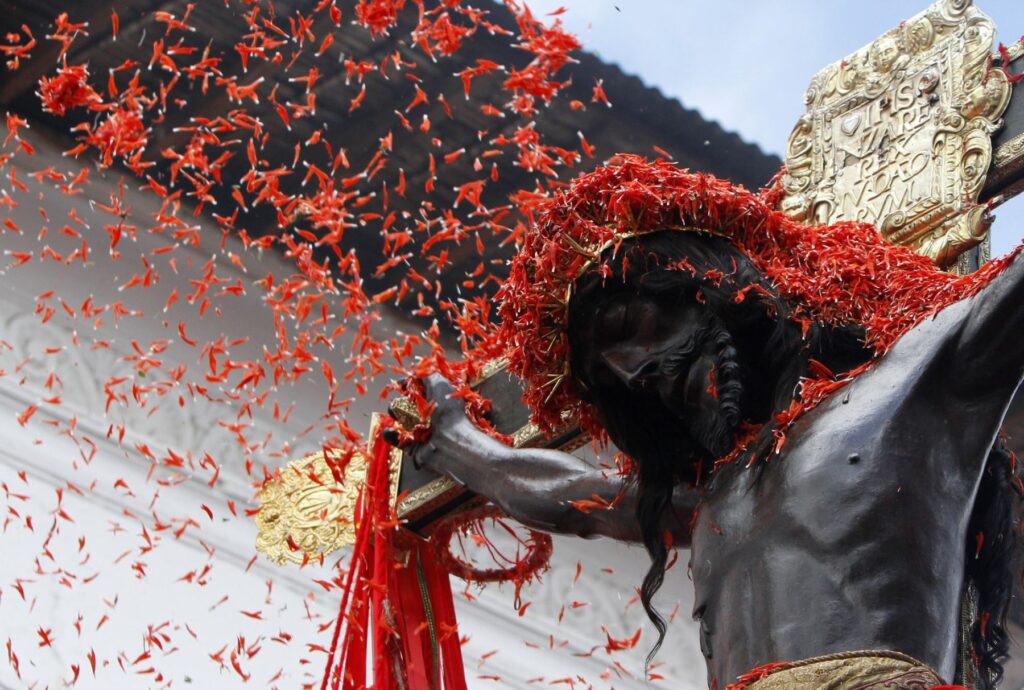
3. Participation of Brotherhoods and Confraternities
Cusqueñan brotherhoods organize the festivity, care for the image of the Lord, and actively participate in the procession, strengthening the town’s religious and community tradition.
- Various religious brotherhoods from Cusco organize the procession and prepare all details of the festivity.
- They are also responsible for caring for the image throughout the year.
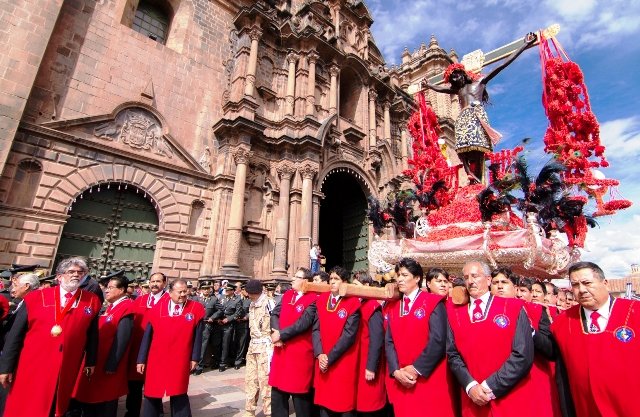
4. Special Masses
Solemn masses are held in Cusco Cathedral and other churches in honor of the Lord of the Earthquakes, gathering thousands of faithful in prayer and spiritual reflection.
- Days before Holy Monday, solemn masses are held at the Cathedral and other churches in Cusco in honor of the dark-skinned Christ.
- These masses bring together thousands of faithful and are broadcast on local radio and TV.
5. Historic Center Decorations
The streets are filled with color and devotion through flags, flowers, and religious symbols, while homes decorate their facades as a sign of faith and deep respect.
- The streets where the image will pass are decorated with flags, flowers, and religious arrangements.
- Houses display white handkerchiefs and red ribbons as a sign of respect and faith.

6. Singing of the Hymn to the Lord of the Earthquakes
The people sing with emotion the hymn in Quechua and Spanish during the procession, a cultural and spiritual expression that unites generations in shared devotion.
- It is a very emotional moment that strengthens the bond between faith and cultural identity.
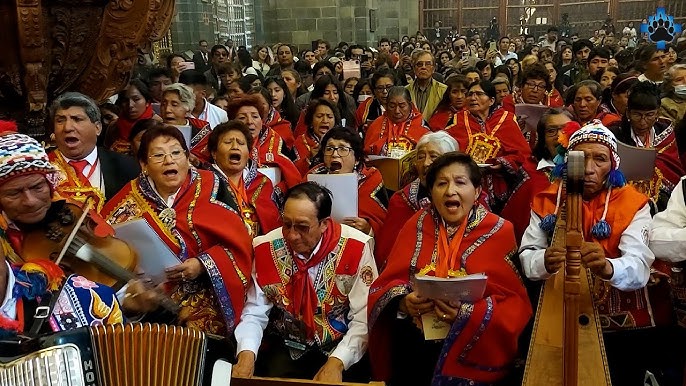
7. Traditional Cuisine
Families gather for this celebration, preparing meals that combine Andean flavors with the spirituality of Holy Week in a unique culinary ritual.
- On that day, many Cusqueñan families prepare the traditional “12 dishes” lunch, a Holy Week custom.
- It includes dishes such as shrimp soup, rice pudding, torrejas, mazamorra, and more.
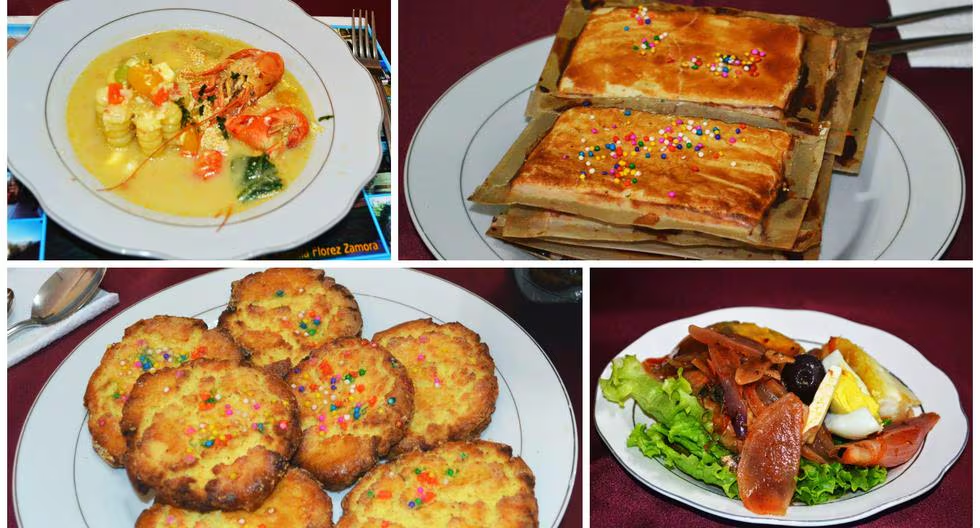
8. Pilgrimages and Promises
Faithful from various communities walk to Cusco to see the Lord of the Earthquakes, fulfilling promises and renewing their faith through sacrifice and devotion.
- Many faithful walk long distances from their communities to the center of Cusco to see the Lord of the Earthquakes.
- Some make personal or family promises, such as carrying the image, singing, or helping with preparations.